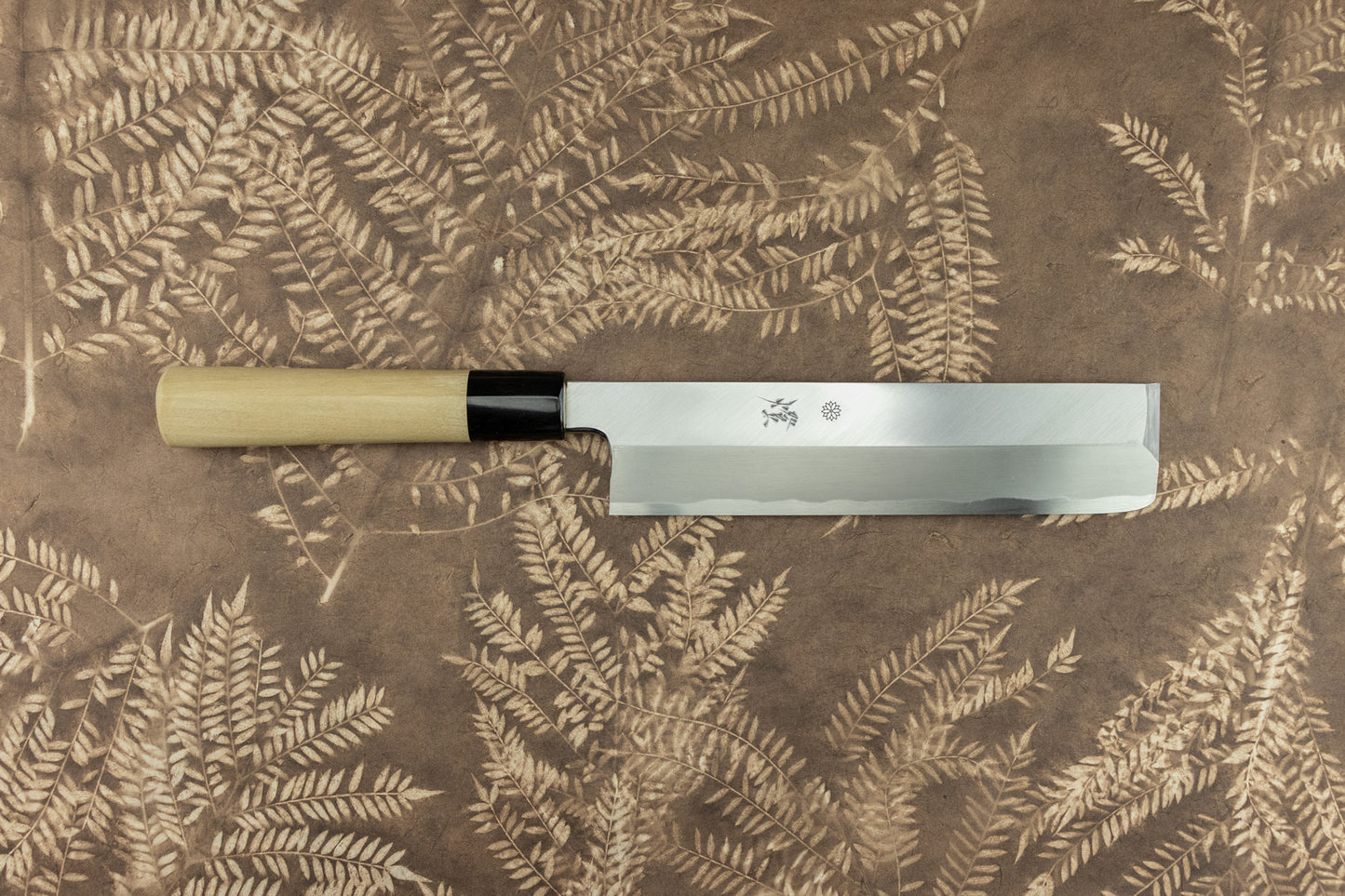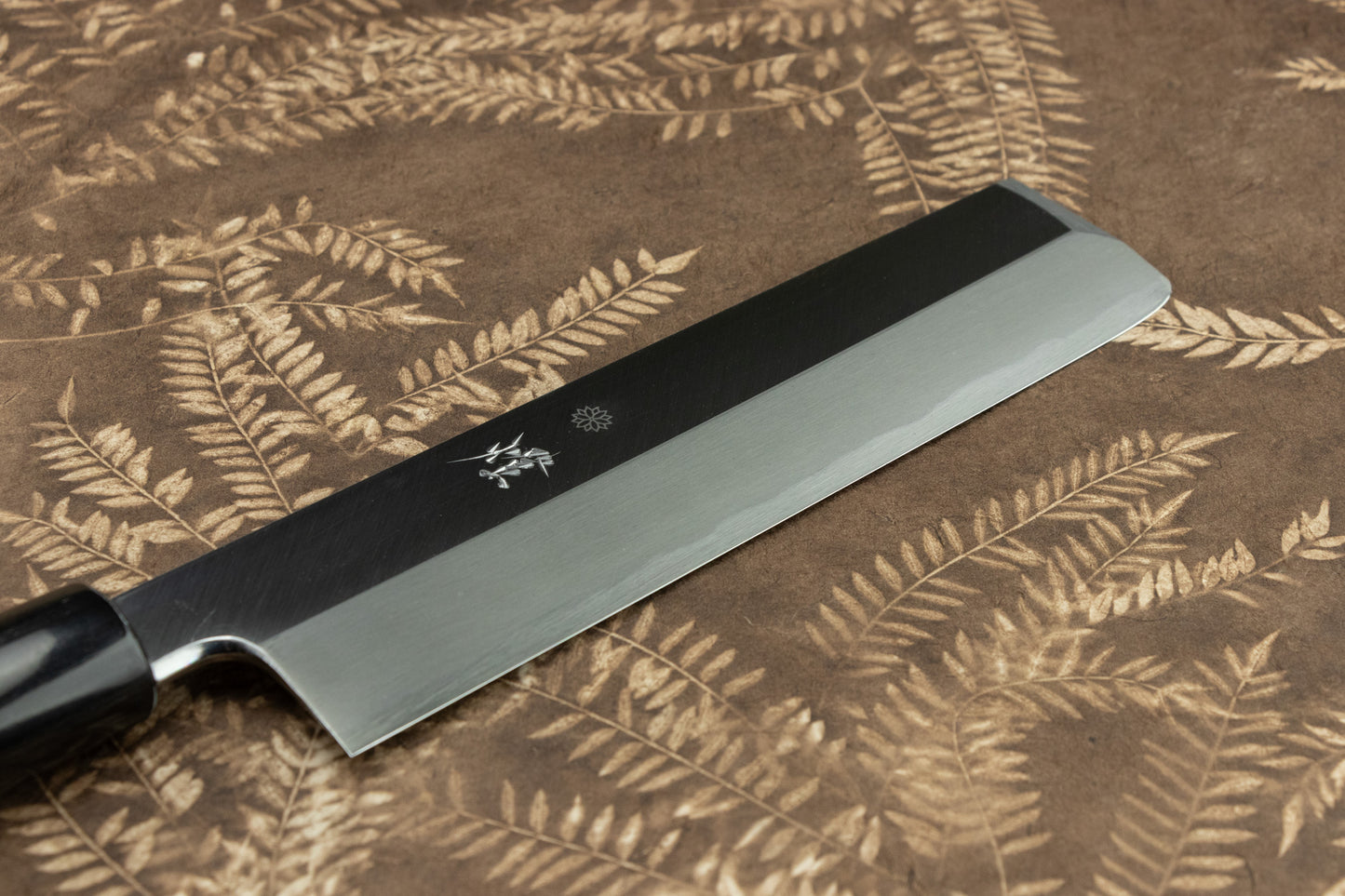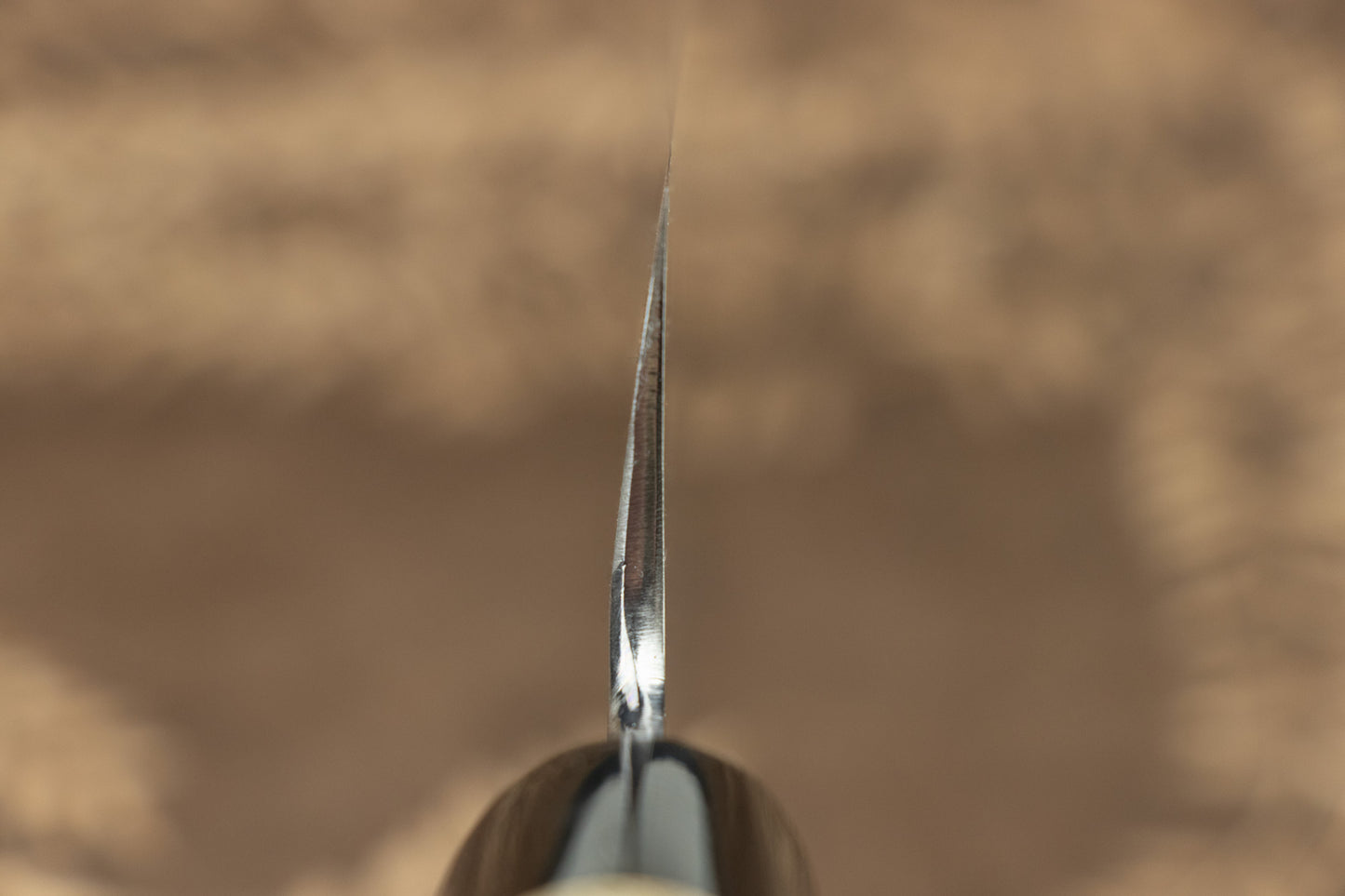Sakai Kikumori Tomoshibi Usuba 210mm
Sakai Kikumori Tomoshibi Usuba 210mm
Couldn't load pickup availability
About the Shape - Usuba translates as “thin edge/blade” in Japanese. The flat blade is meant for precisely cutting vegetables, as the incredibly flat edge makes clean contact with each cut. This prevents veggies from sticking together by thin strands. The Usuba is a traditional Japanese blade that is only sharpened on one side, which is called “single bevel”, and allows it to cut more precisely than other blades.
About Sakai Kikumori - Sakai Kikumori is a wholesaler in Sakai, sort of like Sakai Takayuki and Konosuke. They work with several blacksmiths and sharpeners including Shiraki Hamono, Yoshikazu Tanaka and Morihiro.
This line of knives are forged and sharpened in Tosa region in Kochi prefecture by a team of relatively young but very talented blacksmith and sharpener. In fact, the blacksmith had worked at Knifewear before and decided to become a blacksmith when he returned to Japan.
Shirogami (white) carbon is pretty darn great. It’s super easy to sharpen, takes a brilliantly sharp edge, cuts like silk and is very rugged for its hardness. The hard white carbon steel is forge-welded to a piece of softer carbon steel.
| Shape | |
|---|---|
| Blade Length | |
| Steel Type |
Rust Prone ⓘ
This knife can rust, click to learn more.
|
| Rockwell Hardness | 62–63 |
| Edge/Bevel | |
| Handle | Oval Magnolia Water Buffalo Horn Collar |
| Made in | |
| Brand | Sakai Kikumori |
A note about measurements: Knife edge length is shorter than stated, as Sakai knives are measured from the front of the handle to the tip. Additionally, some knives feature a small 'machi' gap between the handle and blade.
Knife Care
Knife Care
Shipping and Returns
Shipping and Returns
We aim to ship your order within 1 business day at Knifewear, if there is a hold up, we'll aim to let you know and give you a timeline.
We offer $3 shipping on orders over $100* anywhere in Canada and $200* to customers in the USA. We ship worldwide, and offer up to the minute rates from our shipping partner DHL.
*Konro Grills and some other larger items are excluded from the free shipping offer.
How do I make a return on an online order?
No worries, we've got you sorted. Head over to https://knifewear.com/returns and follow the prompts.
Can I pick up my order Curbside / At the store?
Absolutely, as long as all the items you are looking for are in stock at the location you want to pickup from, you'll be able to select that at the checkout. If one or more items aren't at your preferred location we are happy to ship it to you.








